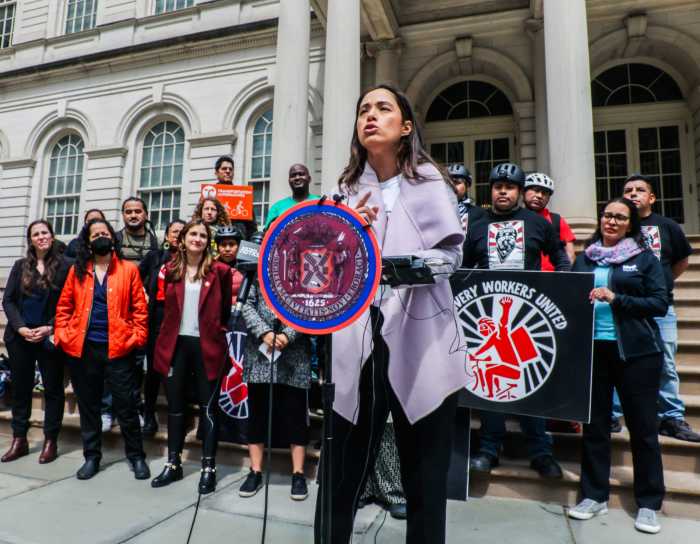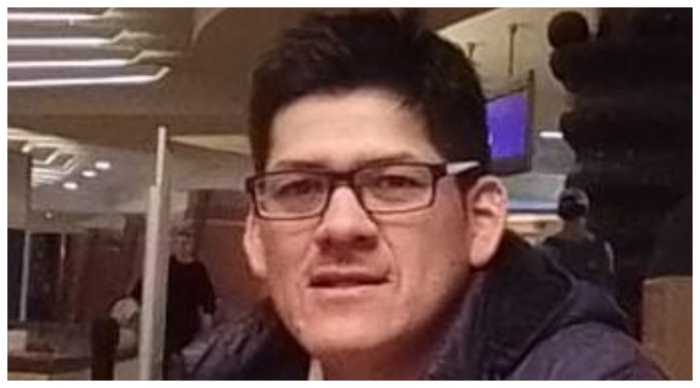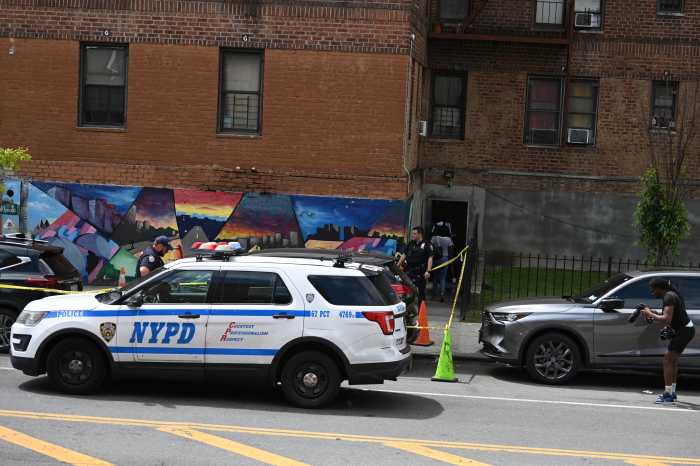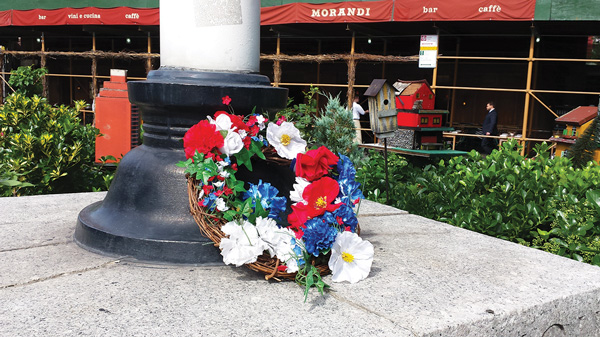
BY ALBERT AMATEAU | Neighbors who oppose the Department of Transportation’s plan to close a short stretch of Waverly Place to cars told a June 24 hearing that the plan, affecting the east side of Seventh Ave. South, would create quality-of-life problems rather than, as intended, make pedestrians safer.
Construction sidewalk bridges for the Greenwich Lane project on the former St. Vincent’s site and for a building “fauxcade” (fake facade) being created to hide a subway ventilation project, both just north of the stretch, present traffic visibility issues, neighbors said.
Moreover, the street closure would “create a stage and a platform for Morandi [Keith McNally’s popular restaurant at 211 Waverly Place] to expand its sidewalk cafe and result in a quality-of-life disaster,” a neighbor said.
Closing the 60-foot stretch of Waverly between the avenue and Charles St. was approved unanimously by Community Board 2 in February after a hearing the previous month. But neighbors protested that they were not aware of the earlier hearing.
“We had a public hearing, but people didn’t understand what it was about,” said Tobi Bergman, C.B. 2 chairperson, who led the June 24 Traffic and Transportation Committee event. “D.O.T. held off on the plan because of the protest,” Bergman said, adding, “This is not a done deal. We wouldn’t be here [at the hearing] if it was.”
The site of the proposed closing is also known as McCarthy Square. It has a small triangular park with a flagpole across from Morandi. D.O.T. representatives at the hearing, headed by Nita Haiman, the agency’s Manhattan borough commissioner, said that four pedestrians have been injured in accidents at the site between 2009 and 2013.
Drivers making a left turn from Seventh Ave. South onto Waverly do not have to slow down much because the angle of the intersection is not sharp, the D.O.T. officials added.
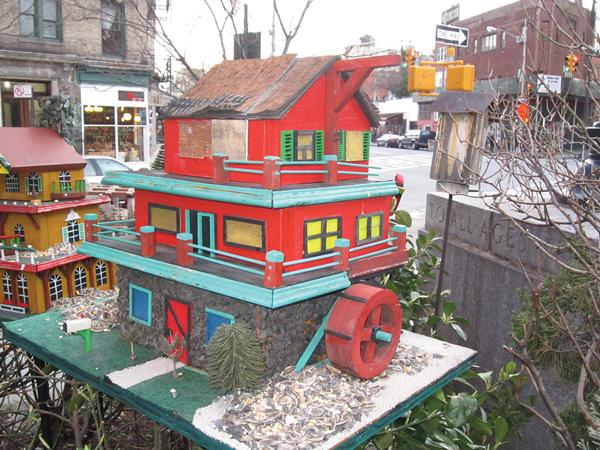
But opponents insisted that closing the stretch to cars would be “too dramatic” and suggested that a stop sign or a flashing yellow light would be better. One neighbor implied that the injury statistic was skewed because of the nearby construction.
“I’d like to see the injuries for the five years before 2009,” he said.
D.O.T. agents, however, said the department must conform to federal guidelines regarding traffic lights and stop signs. The peak use of the stretch is 30 to 50 cars and is not sufficient to justify a light, they said.
For the past week or so, the turn from the avenue onto Waverly Place has been temporarily blocked by orange traffic barrels, of which two are bolted to the street surface and two are moveable. Neighbors, however, said that despite the traffic barrels, drivers continue to make the turn and use the street.
Robin Felcher of the W. 10th St. Block Association urged that the increase in residential population after completion of the Greenwich Lane project be considered before any street closing.
Another neighbor, Fredda Seidenbaum, said, “The closing should wait until at least one of the construction projects is complete.” Seidenbaum added that many drivers, pedestrians and bicycle riders ignore the rules.
“I was knocked down by a bicycle,” she said. “How can we stop lawlessness — people ignoring stop signs and jaywalking?”
But Morandi remained a frequent focus of attention at the June 24 hearing.
“I’m concerned that the street will become a huge outdoor cafe for Morandi,” said Nancy Caldwell, a resident of 15 Charles St., adding,
“Morandi waiters even now use the street to negotiate their outdoor tables.”
Nevertheless, several people at the hearing spoke in favor of the closing.
“I don’t think Morandi is relevant here,” said Nancy Heller. “Quality-of-life issues should not take precedence over safety. Issues about Morandi are not part of the safety issue.”
Bergman noted that Morandi’s outdoor cafe is within the property lot line and therefore does not require a sidewalk cafe license. He suggested that the restaurant paint a white line to demarcate its property from the public sidewalk.
Kirsti Craig, a Morandi executive who attended the hearing with Roberto Tibaldo, Morandi general manager, and Roberta Delice, another executive of the restaurant, said that she would relay the suggestion to McNally when he returns from a business trip.
In a conversation with Caldwell at the end of the hearing, Tibaldo said that Morandi has never received a violation regarding its outdoor tables, adding that city inspectors do indeed make periodic checks.
Bergman closed the 90-minute hearing by saying, “We’re going to look at this issue again and see how to proceed.”




